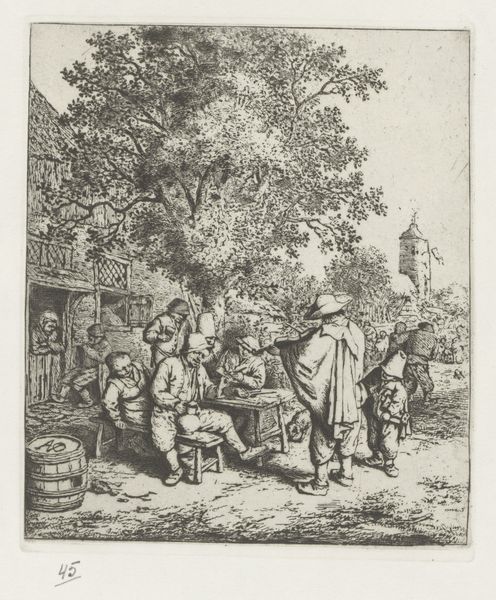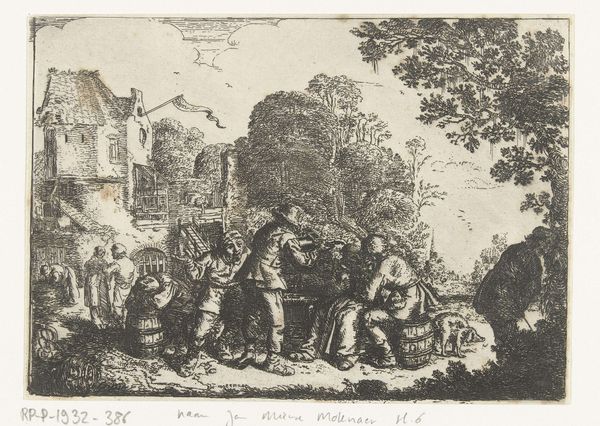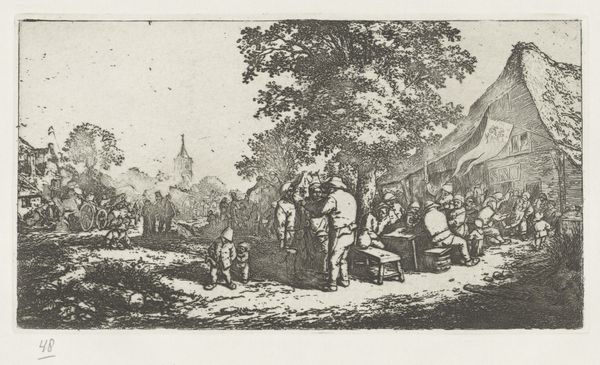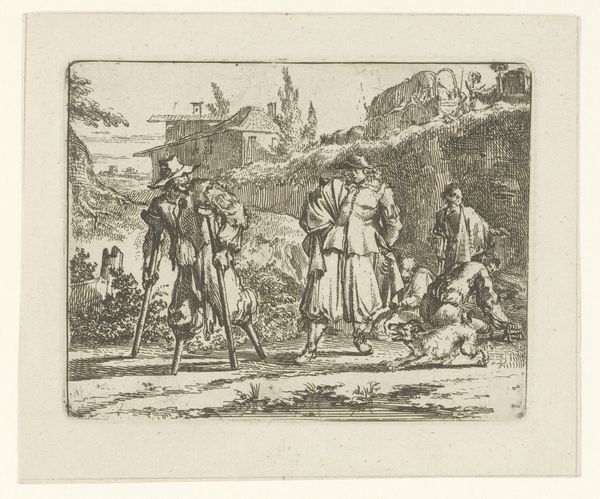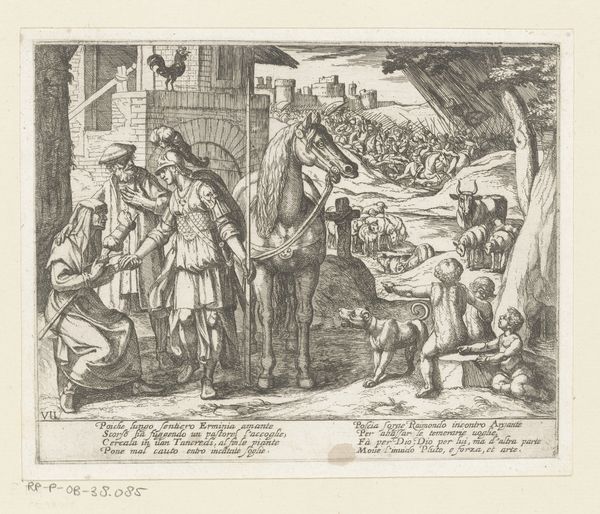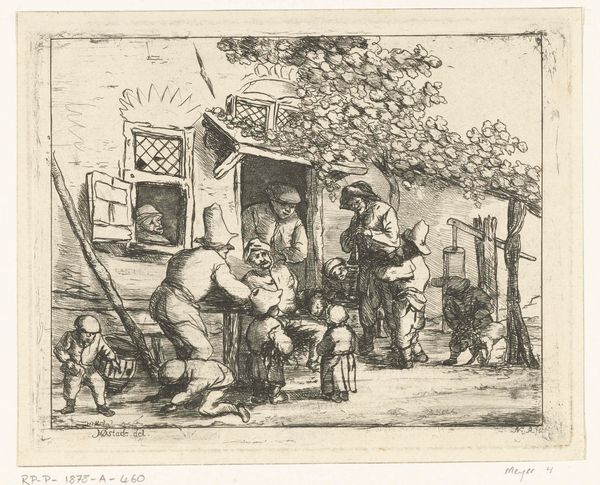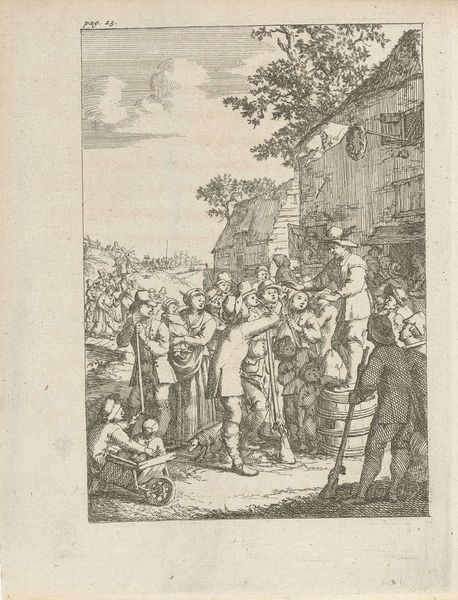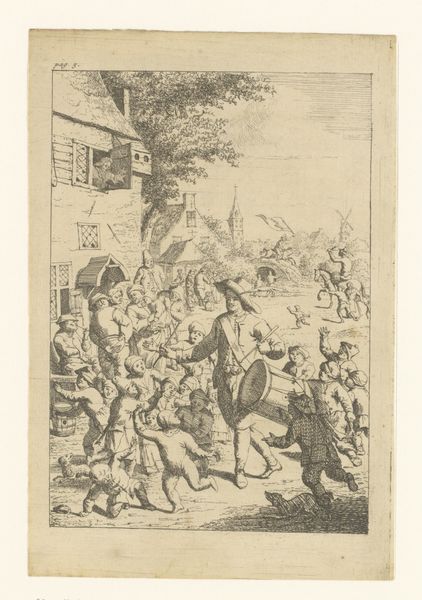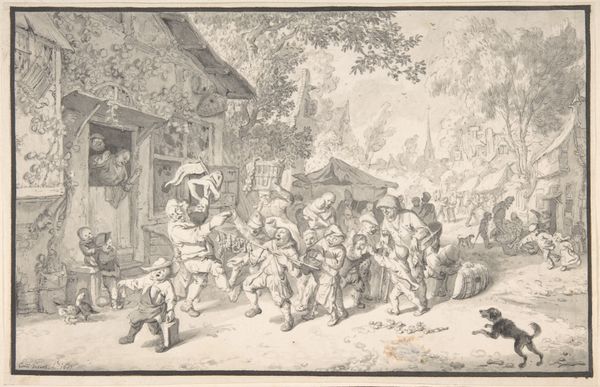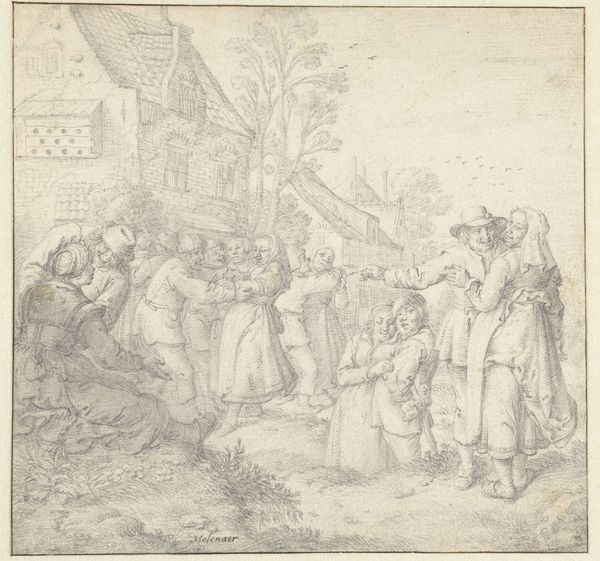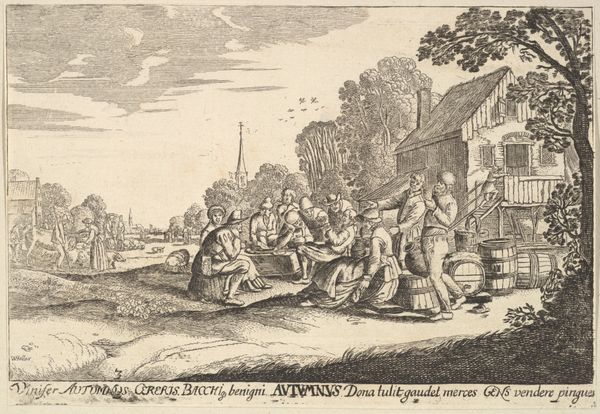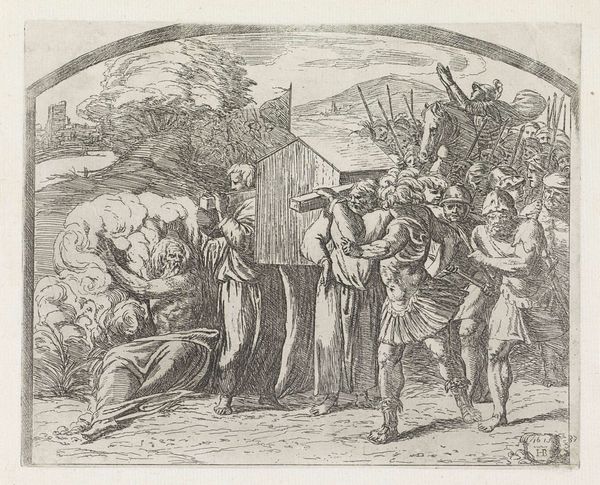
drawing, ink, pen
drawing
dutch-golden-age
pen sketch
landscape
ink
pen-ink sketch
pen
genre-painting
realism
Dimensions: height 132 mm, width 165 mm
Copyright: Rijks Museum: Open Domain
Editor: Here we have Matthias Scheits’ "Brillenverkoper in een boerendorp," or "Spectacles Seller in a Peasant Village," an ink and pen drawing from 1676. It looks like a bustling, if somewhat worn, village scene. What's your read on it? Curator: This drawing presents an interesting tableau of 17th-century Dutch society. We see the spectacle seller, a symbol of emerging trade and specialized labor, interacting directly with the peasantry. Consider the power dynamics at play here: Who has access to knowledge? Who controls the means of seeing clearly? And how does this impact social mobility and economic empowerment? Editor: So, you’re suggesting the image is not just a simple genre scene? Curator: Exactly. Look at the figures closely. The elderly woman being fitted for glasses—what does it mean for her to suddenly gain sharper vision in a world designed, perhaps, for younger eyes? Does it disrupt established hierarchies or challenge traditional roles? And the child begging at the seller's feet - what narratives are unveiled about economic desperation? Editor: I hadn’t thought about it that way. It’s almost a commentary on the uneven distribution of resources, even something as essential as sight. Curator: Precisely! And consider the historical context. This period saw the rise of the Dutch Republic, with increasing urbanization and wealth, but that prosperity wasn't evenly distributed. Scheits is inviting us to contemplate the lived realities of those often overlooked in history's grand narratives. How can this artwork facilitate dialogue around social justice, inequality, and access? Editor: That adds a whole new layer of understanding to the drawing for me. Thank you for pointing out things to consider more broadly in relation to marginalized individuals. Curator: Indeed, the drawing opens a window not just into the past, but onto persistent social problems in general and an opportunity to create further inquiry into historical power relationships and contemporary realities.
Comments
No comments
Be the first to comment and join the conversation on the ultimate creative platform.
